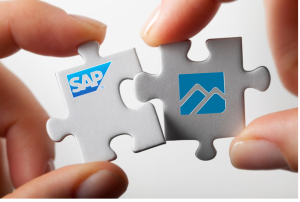 In the last few years, computerization in manufacturing has gradually turned from production planning and process control to production execution systems. By having your LIMS communicate with your Enterprise Resource Planning System (ERP), you tap into the power of lab automation and make supply chain management more efficient.
In the last few years, computerization in manufacturing has gradually turned from production planning and process control to production execution systems. By having your LIMS communicate with your Enterprise Resource Planning System (ERP), you tap into the power of lab automation and make supply chain management more efficient.
Beginning with an initial production work order, your ERP system keeps track of the inspection plans which contains the quality tests which should be performed. This data can be sent to your LIMS to make a quality assessment, and it can be used to create various tests in your LIMS – from standard to specific.
Here at LabVantage, we partner with SAP ERP –integrating our respective systems to allow bi-directional data transfer in a process certified by SAP. Quality Management is a core component of SAP, enabling it to integrate with LIMS.
A Quick Look at How SAP ERP Quality Management Works
Quality Management integrates quality information and processes, such as:
- Quality planning
- Quality inspections
- Quality certificates
- Audit management
The information is integrated across multiple departments. A few areas the QM module covers are:
- Procurement
- Production planning
- Materials management
- Sales & distribution
Regarding inspections, each inspection plan details the sample collection procedures, the inspection method and specifications (e.g., by customer or product grade), and equipment required for the test – including the documentation, materials and instruments. Once an inspection is triggered, either manually or by the SAP system itself, an “inspection lot” is created.
This involves collecting samples, and printing barcodes, worksheets and instructions. After the inspections are carried out, the results are recorded and validated. Any defect data and quality notifications are also noted. The inspection lot is completed by deciding on usage, determining a quality score, updating the quality level, and performing follow-up actions.
This is Your Lab without SAP Integration
The challenge? SAP is often seen as over-complicated or heavily customized for use in labs, often relying on manual activities which can result in costly delays. First, delays in reporting results stagnates inventory turnover due to the slower release of incoming materials. Production can be held up by in-process testing delays, and this can push back release of the finished goods.
Another major cause of delays is simply scheduling lab activities because the lab doesn’t know the workload pushed via SAP. When using SAP on its own, lab analysts must use multiple screens to understand which test requires execution.
There are also issues with manual data entry, with the additional risk of incorrect data being entered into the system – ultimately leading to poor decision-making based on faulty data. Even checking the calibration status of instrumentation or the expiry date of reagents or standards becomes a cumbersome job, since analysts must leave the SAP QM module to check on status.
The result? The quality pyramid in your lab is broken as soon as the sample enters your lab.
This is Your Lab with SAP
The solution? Integrating SAP & LIMS in your QA/QC labs. This can help ensure the entire Inspection Plan is carried out – adhering to the proper procedure, using the required equipment and reagents & standards, and according to the designated characteristics. Next, it banishes all error-prone manual activities, from transcriptions to calculations. Finally, connecting your lab directly to SAP-QM enables the correct transfer of information – whether worklists, due dates, methods, or inspection lot characteristics. Usage decisions can now be made based on true validated information.
When integrating SAP with a LIMS, you can enforce method procedure by avoiding reliance on uncertified personnel, instruments that are uncalibrated, out of service or otherwise unsuitable, and expired chemicals, reagents & standards.
It also allows you to automate calculations and note any results not in line with specifications. Electronic signatures are 21 CFR Part 11 compliant and procedures are automatically documented, along with a complete audit trail that details the reasons changes were made.
Any existing Benchsheets or Worksheets can be replaced with more efficient electronic equivalents.
When your ERP communicates with your LIMS, you free yourself from manual entry and calculations as much as possible – as well as the inevitable mistakes they bring.
You also gain the ability to interact with other lab systems for much-needed information. In such a lab, bar codes and RFID tags are used for everything from equipment to locations, and complete integration is achieved between systems, including:
- SAP-QM
- All instrumentation
- Document Management System
- Lab Inventory System
- Equipment Calibration System
- Reagents and Standards Tracking System
- Training Records System
To find out more about how you can take advantage of the benefits of SAP in your QA/QC labs, contact us today.

